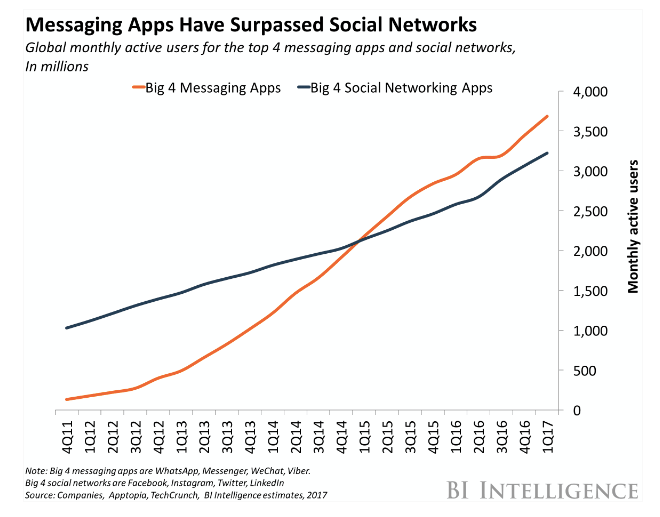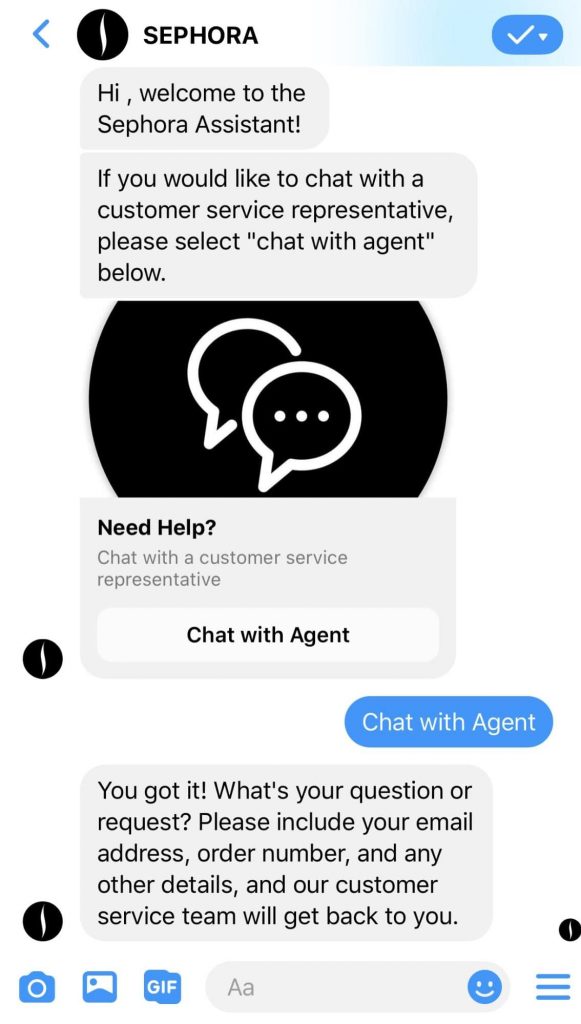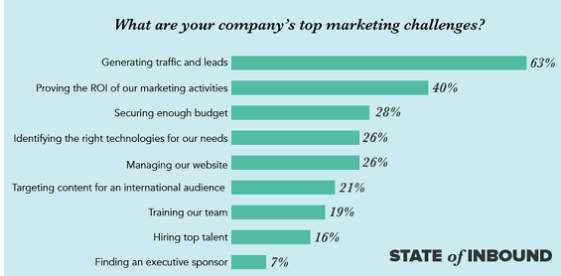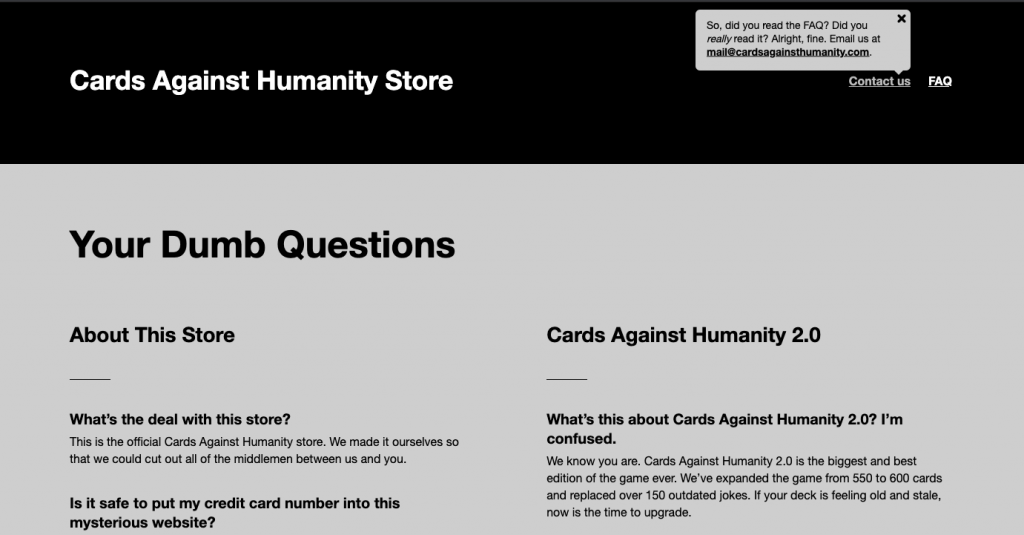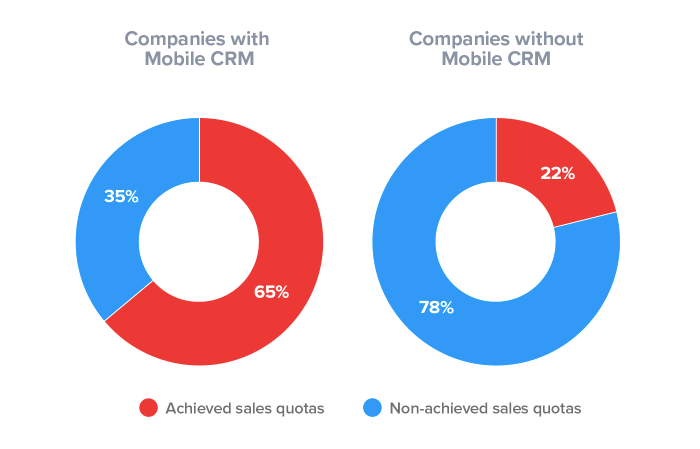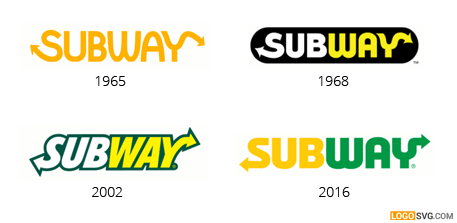Take a moment and think back on all of the most impactful, emotional conversations you’ve had in your life.
Telling your parents goodbye before you moved away from home, hearing your grandmother’s nostalgic stories of her childhood, or musing over far-off possibilities for the future with your first love.
As varied as all of those conversations may have been in subject and context, what’s the one thing that they share in common?
You had them all with other humans.
Simple as it may seem, human interaction is an important through-line to point out in conversation because it’s one that often gets lost in the breakneck pace of the content marketing world.
Perhaps it’s precisely because of the fact that so much content is starved for that indefinable human quality that conversational marketing has taken center stage as one of the biggest trends in copywriting.
It’s clear enough that you don’t want to engage with potential leads like you did with your high school sweetheart, though, so how exactly does conversational marketing translate to higher conversion rates?
Before we can fully explore how conversational marketing works so effectively, we must flesh out precisely what it is.
What Is Conversational Marketing?
It doesn’t take a degree in communications to deduce this definition: conversational marketing is simply a method of interacting with customers that prioritizes quality feedback.
This technique is meant to instantly engage leads, convert them into customers, retain existing clients, and grow a loyal base.
The idea that you can build lasting customer relationships through quality conversation over time isn’t just anecdotal conjecture; feeling as if they are genuinely heard is the single most likely thing to keep customers devoted to a brand.
Think of ordinary content writing as a soliloquy—wordsmiths love to get up on soap boxes and wax poetic, but that doesn’t leave a lot of room for discourse; conversational marketing is much more two-sided.
So, while feature web content and long form articles certainly have a place in every business’ content catalogue, talking points and scripts are becoming more and more important.
Why Should Businesses Buy into Conversational Marketing?
Don’t you wish you could go back in time to 2004 and buy up a bundle of Google stock when it was selling at the bottom barrel price of $85 a share?
That may not be possible, but don’t make the mistake of believing that the technology boom is spent just yet.
If the last few decades have proven anything, it’s that exponential growth in tech isn’t afraid to veer into uncharted waters, and that’s exactly where conversational marketing is going to take the world of business with the help of social platforms.
You can’t go back and ride the coattails of the dotcom boom, but you can make sure your business gets in on the ground floor of the next big thing.
According to research published in 2019, technology growth over the course of the next five years will materially change the way that businesses interact with qualifying leads, and conversational marketing will take the center stage.
What’s more, research indicates that conversational marketing will become a viable revenue stream for businesses in both the B2B and B2C sectors in 2020.
This means you have two options: wait until the future has already arrived and the next wave of social media is swallowing your business in real-time, or get ahead of the curve and allow forward-thinking content writers to develop a conversational marketing strategy for you now.
Regardless of what’s going to happen in the next few years, the next few months, or even next few weeks, writing great content that emphasizes a conversational attitude is important here and now, too.
The truth is, emulating an organic conversation in a contrived setting is more art than science, which is why so few businesses are able to do it effectively.
When a brand is able to make an authentic connection with customers through conversation, it inspires an instant kinship, and that sort of bond with clients is invaluable.
Stellar Copywriting Used as Customer Service
Now that you have a conceptual grasp on conversational marketing, let’s dive into the nitty-gritty: what does it look like in execution?
Most often, conversational marketing occurs in the same venue as most digital conversations—messaging apps.
This is hardly a surprise considering that average monthly users for messaging apps like Facebook Messenger and WhatsApp surpassed even the major social networking sites like Facebook and Twitter in 2017.
So, how exactly do conversational marketing and messaging apps fit together?
Quite naturally, as it turns out.
Personal care and beauty brand Sephora is one company that has used AI as their first line of defense in the conversational marketing game, prompting customers who reach out to them on Facebook Messenger to divulge relevant information to save time for the representative who will eventually join the conversation.
Note that, even when it is a chatbot interacting with the customer, Sephora’s copy maintains a consistent tone, and represents their brand well.
How would you describe the attitude of those messages from Sephora?
Bubbly, charismatic, and genuine!
Make no mistake about it, all of those attributes are intentional, and they were pre-designed by a team of skilled content writers who developed Sephora’s conversational marketing plan.
The best thing about the sort of copywriting done in this conversational marketing approach is that it’s so dressed down you don’t even recognize it—it’s a proverbial Trojan Horse, except there’s nothing unethical about it.
Customers reach out with a question or concern via message, and although they’re directly interacting with chatbots or customer service representatives, they’re being fed answers carefully concocted by a team of crafty copywriters; before they know it, they’ve talked themselves into making a purchase.
Messaging apps may be the most common venue for conversational marketing at present, but this burgeoning trend is picking up steam in other locales as well.
Side-Stepping One-Sidedness in Conversational Blog Writing
You probably already know that if you aren’t investing in good blogging, you’re missing out on major traffic potential.
In fact, adding a blog to your business’ website can increase your traffic by more than 400% because a whopping 77% of people who use the internet, read blogs.
Considering more than 60% of businesses cite difficulty generating traffic as their largest gripe, those statistics aren’t something you can afford to ignore, especially when you factor in that the time and expense to start a blog are minuscule in comparison with those numbers.
Luckily, conversational marketing can be applied to a great blog post just as it can be implemented into a customer service funnel, but it takes a bit more creative vision.
Lifestyle blog Cup of Jo mastered the subtle art of writing a conversational blog in this example by drawing its readers into the process.
The Cup of Jo team brainstormed the topic, posed a question to social media followers in order to create content, and didn’t start writing until enough replies had come in to feel like a sufficient discourse.
Even though the team was literally writing a blog post from their perspective, they were also able to tell the stories of their followers at the same time, thus making the piece feel far more conversational.
The moral of the story is, it takes more than a knack for words and a solid topic to write a great blog post if you’ve got your eye on conversationalism.
Use Video Content as An Opportunity to Strike Up a Dialogue
According to 2020 research, 85% of businesses now utilize videos as part of their marketing plan; as this corresponding graphic indicates, that’s up from 61% just four years ago.
It’s not just the public’s waning attention span that’s prompted this surge in video popularity (though that’s certainly part of it); the fact is, companies can see a boost of up to 80% in conversion rates when they really invest in video content.
Can you capitalize on the video surge and the conversational marketing trend at the same time, though?
Absolutely!
Most popular in the world of video content is a subcategory known as explainer videos; these are short, informative clips where a business guides customers through processes specific to their company.
These videos can seem almost like a cross between a tutorial and a kid’s show—they’re slow-paced without feeling remedial, hyper-friendly, user-focused, and the perfect opportunity to implement some conversational marketing.
Of course, there’s no way to have an actual conversation during an explainer video, but the script must be written as if an imaginary conversation is taking place in order to answer the user’s questions.
Heres a perfect example of that
Not all video content is as curated as explainer videos, though.
Many popular social media platforms like Instagram and Facebook now allow you to go “Live” and interact with followers directly; some businesses are using this opportunity to create conversational video content that’s about as casual as it gets.
In this example, clothing company Revolve hosted an impromptu yoga session with one of its brand ambassadors on Instagram Live.
Followers commented with questions about the playlist and the poses; of course, the ambassador was outfitted head to toe in Revolve clothing items.
In this version of conversational video marketing, the brand isn’t following a strict script per se, but is still working to uphold an image that they have already painstakingly developed.
Obviously, conversational marketing is a relatively fluid concept, so putting it to work for your business will take a little bit of meticulous planning and a whole lot of creative brain power.
How to Implement Conversational Marketing with Superior Content Writing
The average consumer is inundated with advertisements, both overt and surreptitious, on a daily basis.
Although most people take note of more than 150 different ads a day, can you guess how many of that 150 actually engage them?
Just 12—that’s .08% and writing copy that’s out of this world is the only way to ensure that your business rises to the challenge of falling into that 99th percentile.
By now, you know that conversational marketing is the wave of the future, but you may not be quite as clear on the concrete steps you need to take to implement it into your marketing plan; fortunately, this can be achieved rather simply.
Build a library of branded, consistent content
When tackling the concept of conversational marketing, you’ll need to take a holistic approach—every single piece of content related to your business should be imbued with branding.
Cards Against Humanity is well-known for their sardonic, playful copywriting, and they make sure to apply that same attitude to the more conversational aspects of their branding as well, like their FAQ and contact sections.
When you lock into a team of writers that understands your brand personality and can write everything from email campaigns to customer service responses using it, you’re well on your way to an effective conversational content marketing strategy.
Integrate conversational marketing into your CRM
You already know that CRM software helps your sales team meet quotas in a major way, but you probably didn’t realize that conversational marketing can kick your customer relationship management into overdrive.
When you apply the information gained from conversational marketing initiatives to CRM, you can pick up where you left off the next time you interact with a customer.
Imagine that someone reaches out to your company on Facebook messenger and asks a few questions about a product; after interacting with a chatbot scripted by your conversational marketing prompt, the customer eventually makes a purchase.
Because of CRM integration, when the customer reaches out a week later to check the status of their shipment, your system is able to pull up their order information and answer their question without skipping a beat.
Sounds pretty great, right?
Your customers will think so too.
That’s the power of conversational marketing.
Revisit and update your content library regularly
The world keeps on turning, the sun will rise again, and your brand must evolve or it will quickly grow stagnant.
On average, businesses completely rebrand once every 7-10 years, but this entails everything from an entirely new color palette and logo to an updated tagline and ambiance.
The popular sandwich chain Subway has had more than its fair share of well-publicized rebranding efforts over the years, though a certain level of consistency has always been evident.
You don’t have to completely rethink your brand identity in order to stay current.
You should, however, avoid the common mistake of getting comfortable in your success and believing you have nothing left to improve upon.
Your website may be performing well, but it could always be performing better.
Your customer interactions could be amiable, but they could be even friendlier.
The point is, the moment you stop pushing is the moment you resign yourself to failure, so even if you have absolutely brilliant conversational marketing content in your library, you should make a point to give it a good once over every few months just to make sure there aren’t any areas that could use some tweaking.
While the specifics are a little more involved, those are the three integral steps for effectively implementing conversational marketing in your business model.
Choosing The Best Tech to Complement Your Conversational Marketing Plan
The old saying goes, “you can lead a horse to water, but you can’t make it drink.”
By the same logic, you can entice a qualifying lead with dazzling conversational content, but you can’t make them convert to a buyer if the user experience hasn’t been fully fleshed out.
Maybe the e-commerce function on your site is lackluster, maybe your CRM fails to properly ticket a lead, or maybe a buggy chatbot never triggers a programmed response; in any case, faulty tech can cost you real money if you’re not careful.
The aforementioned scenarios happen to be the three biggest technology risks to a well-oiled conversational marketing machine, so the software elements you should invest in to further enhance spectacular copy are:
How much or how little you invest in each of these elements depends on your specific business model, but if any of these pieces fails to function as intended, your conversational marketing efforts may have been all for naught.
On the other hand, when every player executes their role with an exact procession and the sales funnel zips through a domino effect at lightning speed, you’ll wonder how you ever stayed in business without integrating conversational marketing before.
Take A Dressed Down Approach to Send Profits Sky High
It can be tempting for businesses to approach marketing with a buttoned-up, analytical mindset.
It’s certainly true that data plays an important role in every effective strategy, but numbers can’t account for the most important part of any marketing tactic: the people being targeted.
The bottom line is that the customers you’re trying to reach aren’t just demographics or quotas, they’re human beings with thoughts and feelings.
More often than not, average people aren’t all that interested in sales letters and white papers—you’ll be surprised by how far you get just by conversing with them naturally and authentically.
Conversational marketing doesn’t simply mean slapping together a really great blog post, streamlining your customer service responses, or making an effort to engage with followers on social media.
A truly effective conversational marketing plan requires a robust library of top-tier content characteristic of your brand, applicable to every possible forward-facing situation; that content must be supported by a staff who knows how to wield it, and tech that’s capable of matching its prowess.
You’re likely to find that once you settle on conversational marketing as your new technique of choice, you can breathe a sigh of relief. Every day might start to feel like Casual Friday as your customer interactions become breezier, but you’ll be in more control over your company’s destiny and your collective message than ever.


